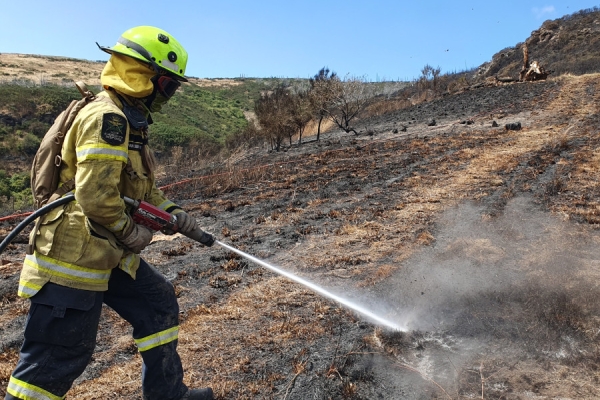Published on the 29/10/2025 | Written by Heather Wright

Automation over contractor scaling…
New Zealand’s firefighters might soon be getting a major upgrade in how they report incidents, with Fire and Emergency New Zealand – riding high after a successful document AI transformation – now looking at enabling voice recording for incidents.
The voice recording work follows hard on the heels of the deployment of the automation of its evacuation scheme compliance process which is forecast to slash both work required and costs for the scheme.
“Proof of concepts are easy. Deployment is bloody hard.”
Hamish McEwen, Fire and Emergency New Zealand (FENZ) chief data and analytics officer, told the recent Snowflake World Tour Auckland, that in its regulatory function, FENZ receives around 80,000 evacuation trial and training reports each year. The reports are required to be completed by buildings twice a year, with more frequent testing and reporting for higher risk facilities, such as old people’s homes.
“We have to do a regulatory compliance function check that those trials are completed.”
But, he says, it’s a problem of numbers and scale for FENZ.
“Unfortunately, our regulatory powers don’t tell people how they must report to us, just that they must give us information.”
The reports are submitted in a wide range of formats, including Word documents, PDFs and scans – via email or an automatic submission platform. With no standardised reporting method, the organisation was relying on a team of up to five to manually process thousands of documents, extracting the data and entering it into the Pega system of record, costing around $350,000 a year in ‘pure people costs’.
On top of that, McEwen says FENZ had no visibility into how well buildings were performing their evacuations.
“We don’t see any data, we don’t see any insights. We don’t know if you’re doing well on your trial and training schemes or how quickly you might be doing them or whether people are getting injured leaving the building – all the things we want to know about and help manage.”
The fatal Loafers Lodge fire in Wellington, where poor evacuation scheme maintenance was identified as a contributing factor, has seen increased pressure on FENZ around its regulatory function. The organisation also believes at least double the current number of buildings need to have evacuation schemes, further adding to workload.
The solution ingests emails, converts attachments to PDFs and extracts structured data for compliance tracking.
Now in production, the system is expected to fully automate 40,000 documents a year, reducing handling time from over two hours per document to under five minutes, and able to run 24/7.
The rough estimate on processing – which McEwen admits is ‘probably at the lower end – is $4,000. The contractors will be freed to go into other work or leave – an area McEwen admits has needed thought with AI clearly going to impact FENZ’s people.
“That’s less than 12 months for a return on investment.”
The project was initiated by a BI manager who asked to trial Snowflake’s document AI functionality.
“It started with someone saying ‘I’ve heard about this problem we’ve got, can I have a go?’,” McEwen says. “He then drafted up a very simple architecture and we did a programme of work that essentially used Power Apps that automated all the processes into Snowflake.”
The success of the compliance automation has paved the way for other initiatives, including the voice-based incident reporting system for firefighters which developing using Snowflake Streamlit apps. Firefighters currently have two weeks to type out manual incident reports.
“Imagine if they can just voice record it as they’re leaving,” he says, suggesting the quality of the reports will be much higher, and administrative burden on frontline staff will be reduced.
“Having an ROI story has been the most helpful thing. It’s giving us the freedom to do other things. The better the metrics, the more buy in you get by miles.
“Find the pain points and fix them – I know that sounds pretty cliché – but people have lots of pain and most people I talk to in FENZ, documentation is really their biggest pain point.
“We’re an organisation with policies out the wazoo and managing those policies, keeping them up to date and consistent, all those things, are all things AI can really fix.”
Despite the gains, McEwen is clear-eyed about the challenges.
“Proof of concepts are easy. Deployment is bloody hard. We had our proof of concept done in February and we’re only deploying now. Deploying into systems and changing processes in the way people work takes time.”
He emphasised too, the importance of user buy-in, admitting some of FENZ teams weren’t convinced AI was going to help them – and it’s not just reticence brought on by concerns about what AI means for their jobs.
“There are a few things going on. One is understanding that the prompts they provide the AI tool, the context they provide, is more critical than people think. And the other is that models still have to learn. You have to give them time to learn.”



























